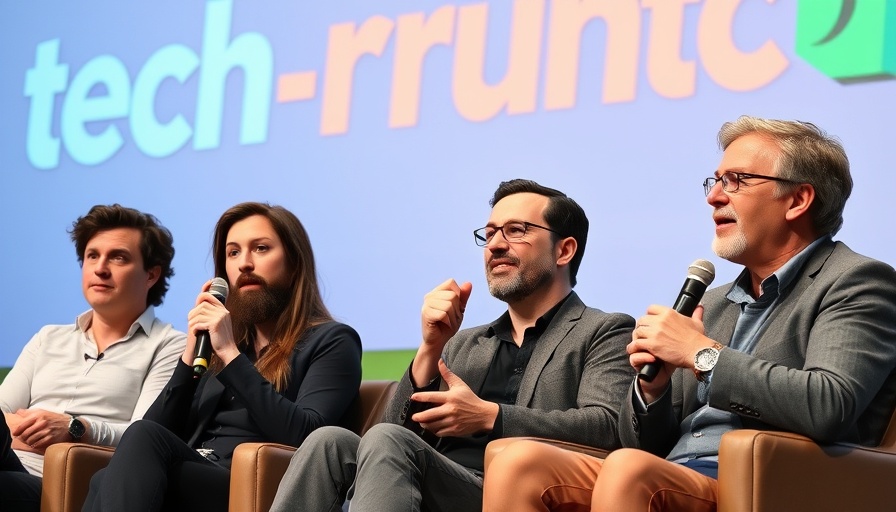
Navigating the High-Stakes Landscape of AI Startups
Investing in growth-stage AI startups has reached a pivotal moment where excitement and apprehension coexist. Companies like OpenAI, Microsoft, and Google have expanded their footprints, pushing small players into a race against not just time, but a wave of mergers and consolidations that could leave innovative new firms struggling to survive. As the landscape evolves, investors are faced with both unique opportunities and potential pitfalls at an unprecedented scale.
Defining 'Growth Stage' in Today's AI Market
Understanding what constitutes 'growth stage' within the AI sector has become increasingly complex. Jill Chase, a partner at CapitalG, highlights that many startups achieve impressive milestones—like tens of millions in annual revenue and billion-dollar valuations—within their first year. While this rapid ascent is promising, it raises questions about the underlying stability and foundational infrastructure of these companies. As Chase articulately points out, investing in a company that just a year ago was a concept can lead to significant risks if the market shifts unexpectedly.
Spotlight on Successful Examples: Learning from Cursor
Cursor, an AI coding startup, exemplifies how agility and foresight can lead to success in this volatile industry. By aligning with current technological capabilities, it managed to create a product that resonated with market needs. However, as Chase warns, the existence of faster and smarter AI-nurtured coding tools on the horizon means Cursor must continuously adapt to maintain its lead. This swift innovation cycle presents both opportunities for growth and risks of obsolescence for AI startups.
Future Predictions: What Lies Ahead for AI Startups?
The next decade promises groundbreaking advancements in technology, particularly in AI. As new coding tools emerge, the entire industry landscape will likely shift, presenting challenges to established players and startups alike. Investors must monitor these developments closely, as the relative advantage of today's frontrunners can quickly diminish. Companies may find themselves racing against independent developers and well-resourced tech giants, making diversification and strategic foresight essential for longevity.
Counterarguments: Diverse Perspectives on Investment Risks
While some experts warn of overvaluation and swift market changes, others maintain that the potential rewards of investing in pioneering AI technology are substantial. The argument lies in finding a balance between caution and opportunity. Investors are encouraged to conduct comprehensive due diligence, considering both the past performance and future adaptability of the startups they consider backing. This dual approach can aid in navigating the complexities of the market.
Connecting with the Community: The Importance of Founders
At the heart of successful AI startups are innovative and adaptable founders. Investors are increasingly advised to assess not only the viability of a startup's product but also the capabilities and vision of its leadership. Founders with a clear strategic outlook and resilience to pivot are more likely to navigate treacherous waters successfully. Engaging with and understanding their vision can offer investors a significant advantage.
Practical Insights: Navigating the Risks of AI Investments
Investors can take several practical steps to mitigate risk as they venture into AI startup investments. First, focusing on scalability and adaptability in a business model is crucial. Companies that demonstrate flexibility are often better positioned to manage unforeseen challenges. Second, maintaining an awareness of emerging market trends, competitive threats, and technological advancements is vital. This dynamic approach allows investors to reassess their portfolios regularly, ensuring alignment with ongoing industry shifts.
The Emotional Aspect: Fear vs. Opportunity
Investing in AI startups inevitably brings a mix of excitement and anxiety. The uncertainty surrounding the rapid pace of change in this tech sector makes it crucial for investors to cultivate resilience and adaptability in their approach. The stakes are high, but so are the potential rewards. Embracing calculated risks while remaining informed can lead to insightful decisions that capitalize on emerging trends, helping investors stay ahead in the game.
As the world of AI continues to develop, the discussion around investing in growth-stage startups will undoubtedly evolve. Now is the time for interested investors to equip themselves with the knowledge necessary to navigate these intriguing and sometimes treacherous waters.
 Add Row
Add Row  Add
Add 



Write A Comment